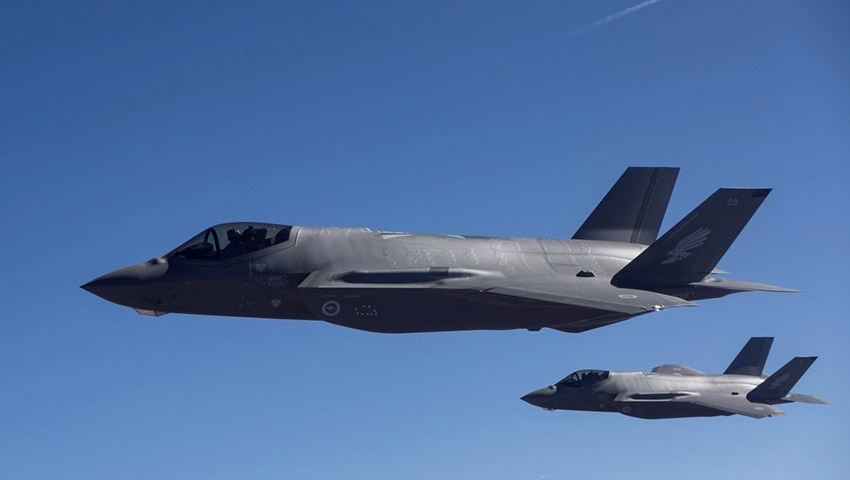The F-35 Joint Program Office (JPO) has put in place stop-gap fixes for five key technical flaws plaguing America’s top-end fighter jet, though the issues still remain in the background without a final fix that can eliminate the issues completely.
It was reported last June by Defense News that 13 major technical issues (level 1 deficiencies) had been raised regarding the F-35, five of those 13 have been downgraded to level 2 deficiencies.
Alarmingly, level 1 deficiency categories are those issues that include shortfall that could cause death, severe injury or illness; could cause loss or damage to the aircraft or its equipment; critically restricts the operator’s ability to be ready for combat; prevents the jet from performing well enough to accomplish primary or secondary missions; results in a work stoppage at the production line; or blocks mission-critical test points.
A level 2 deficiency is of lesser concern, cited as something that requires monitoring, but not something that should impact operations.
Dan Grazier, who tracks military issues for the Project on Government Oversight, has advised however that downgrading the category doesn't mean the problems are solved.
CAT 2 programs are still "definitely cause for concern. They are going to have an impact on how the aircraft performs”, Grazier said.
"It really depends on what the issue is, but every design flaw has a potential issue on the mission ... You want to not have flaws, you want these things can be fixed so pilots can get out and do what they need to do,” he said.
The JPO has only released brief statements updating which issues have been downgraded, with a spokesperson stating, “[The JPO] cannot disclose any information about how these deficiencies were resolved or downgraded due to their security classification."
Some of the fixes revealed were in regard to:
- Concern over the ALIS sovereign data transfer solution, which did not meet information assurance requirements of international partners that feared that flight data and use of F-35 could be tracked by the US. According to the JPO, on 29 April 2019, an update to ALIS included an initial version of a new sovereign data management tool.
- Incorrect inventory data for complex assemblies continues to result in grounding conditions. The JPO stated, “Due to ALIS data quality improvements that have been made in the two years since this DR [deficiency report] was written. The quality improvements have reduced the frequency and magnitude of issues that have impacted operational units’ abilities to quickly release aircraft for flight following maintenance.”
- The F-35B and F-35C experienced incongruous lateral and longitudinal control response above a 20-degree angle of attack. The JPO downgraded this issue to a CAT 2 on 28 May 2019, for the F-35C and on 8 July 2019, for the F-35B. The solution involves “improvements in flying qualities that were implemented in software. The improvements provide pilots with an intuitive reference indication for AOA [angle of attack], which allows pilots to more quickly optimise lateral manoeuvring during air-to-air manoeuvring. These software improvements have been released to all F-35 operators”.
- There were unanticipated thrust limits in jetborne flight on hot days. The JPO initially expected a fix for this issue to be out sometime in 2019, but it wasn’t until March 2020 that a mix of nondescript “software updates and procedural adjustments” brought the “propulsion system performance back to originally specified performance levels”.
For the RAAF, the F-35A's combination of full-spectrum, low-observable stealth coatings and materials, advanced radar-dispersing shaping, network-centric sensor and communications suites – combined with a lethal strike capability – means the aircraft will be the ultimate force-multiplying, air-combat platform.
The F-35A – the variant chosen by the RAAF – will have a projected life of 30 years in service.
The Lockheed Martin F-35 Joint Strike Fighter is billed as a catalyst for the fifth-generation revolution, changing the face and capability of the Royal Australian Air Force and the wider Australian Defence Force.
Over the coming years, Australia will purchase 72 of the advanced fifth-generation fighter aircraft as part of the $17 billion AIR 6000 Phase 2A/B program – which is aimed at replacing the ageing F/A-18A/B Classic Hornets that have been in service with the RAAF since 1985.


